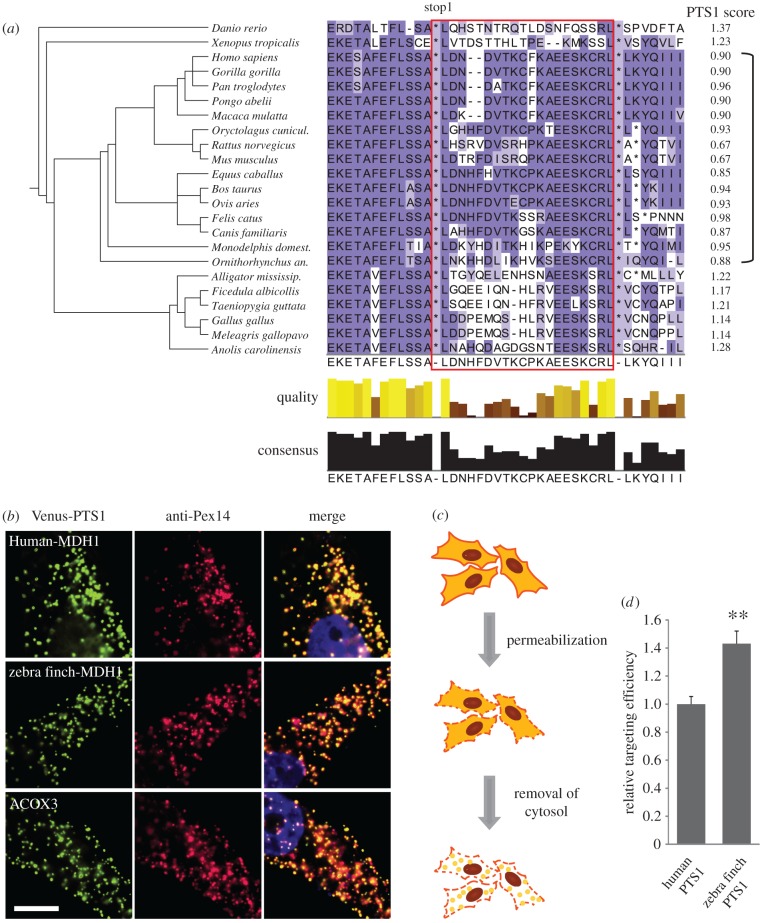Figure 5.
Assessing the ‘bird gap’: comparative analysis of the zebra finch and human hidden PTS1. (a) Alignment of MDH1x termini in mammals and non-mammalian vertebrates. MDH1x is conserved throughout vertebrates. Red box marks readthrough extension. Bracket on the right-hand side: Mammals. PTS1 score calculation suggests that mammalian MDH1x PTS1 is weaker than the PTS1 of non-mammalian vertebrate MDH1x. Non-mammalian species, however, do not have LDHBx (bird gap). (b) PTS1 of both human and zebra finch (Taeniopygia guttata) MDH1x localize to peroxisomes. PTS1 from peroxisomal membrane protein ACOX3 was used as a positive control. Scale bar, 10 µm. (c) Quantitative live analysis of peroxisomal protein import efficiency. Venus-tagged PTS1 was expressed in HeLa cells. After digitonin permeabilization of the plasma membrane, the cytoplasm was washed out by PBS. Hundred cells from images pre and post removal of cytoplasm were used to calculate import efficiency. (d) Analysis of Venus fluorescence before and after removal of cytoplasm revealed that targeting efficiency of zebra finch Venus-tagged MDH1x PTS1 is more efficient compared with human MDH1x PTS1. **p = 0.005 versus human PTS1 (Student's t-test), N = 5. Error bars, s.e.m.

